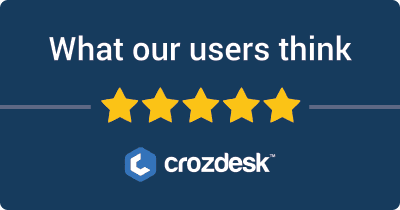
Basecamp and Airtable are two widely-used tools in the realm of task management, each catering to different organizational needs and preferences. Basecamp primarily focuses on project management and team collaboration, offering a centralized platform for communication, task tracking, and document sharing. In contrast, Airtable serves as a flexible database and spreadsheet hybrid, enabling users to customize workflows, manage information, and track tasks in a more visual format.
Users are drawn to Basecamp for its simplicity in managing projects and fostering team collaboration, while Airtable attracts those seeking extensive customization options and versatile usage scenarios.
When comparing these tools, key aspects to consider include:
- Features: Evaluate the core functionalities each tool offers, such as task assignment, deadline tracking, and project visualization.
- Pricing: Analyze the cost structures, including free tiers and subscription options, to determine value for money.
- Ease of Use: Consider the learning curve and user experience, which can significantly impact team adoption and productivity.
These factors will aid users in choosing the tool that best aligns with their task management needs and operational workflows.
Basecamp VS Airtable: Which tool is the most popular?
| Tool | Review Count | Average Rating | Positive Reviews | Neutral Reviews | Negative Reviews |
|---|---|---|---|---|---|
| Basecamp | 29 | 3.98 | 24 | 1 | 4 |
| Airtable | 57 | 3.33 | 34 | 1 | 22 |
Basecamp is the most popular tool based on average user rating, achieving 3.98 from 29 reviews. It also has a high number of positive reviews at 24, indicating overall satisfaction among users. In contrast, Airtable, with 57 reviews, has the lowest average rating at 3.33, coupled with 22 negative reviews, suggesting a degree of dissatisfaction among its users.


Basecamp and Airtable: Quick Comparison Overview
| Feature/Aspect | Ahrefs | SEMrush |
|---|---|---|
| Primary Features | – Site Explorer – Keyword Explorer – Backlink Checker – Content Explorer – Rank Tracker |
– Keyword Research – Site Audit – Position Tracking – Content Analyzer – Marketing Insights |
| Target Audience | – SEO professionals – Digital marketers – Agencies focusing on content marketing and backlink analysis |
– Digital marketers – SEO experts – Content marketers – Social media marketers and PPC specialists |
| Main Advantages | – Robust backlink analysis – Comprehensive keyword data – Intuitive user interface – Constantly updated index |
– All-in-one digital marketing tool – Extensive competitor analysis – Wide array of tools for SEO and PPC – Integrated social media management |
| Core Value Proposition | Focused on providing in-depth SEO insights, particularly strengths in backlink profiles and organic keyword rankings. Ideal for users prioritizing content strategy and link-building efforts. | Offers a holistic view of digital marketing, making it easier to manage all aspects of online presence through an extensive range of tools for SEO, PPC, and social media marketing. |
| Ideal Use Cases | – Conducting comprehensive link audits – Developing effective content strategies – Tracking backlinks and organic rankings – Keyword planning for SEO campaigns |
– Managing and optimizing PPC campaigns – Conducting competitive analysis for market positioning – Comprehensive content analytics and SEO tracking – Social media metrics and management |
Most liked vs most disliked features of Basecamp and Airtable
| Aspect | Basecamp | Airtable |
|---|---|---|
| Most Liked Features | Custom access settings for clients | Simple and intuitive interface |
| Simplicity for all skill levels | Flexibility in data presentation | |
| Effective collaboration | Strong collaboration capabilities | |
| Project organization features | Diverse integration options | |
| Automatic reminders | Straightforward import/export functionalities | |
| Most Disliked Features | Lacks essential features for complexity | Desire for more advanced features |
| Limited visual representation of timelines | Issues with certain integrations | |
| Difficulty viewing multiple team projects | May fall short for larger projects | |
| Limited capabilities for expert users | Overwhelming visualization capabilities | |
| Constraints during trial usage | Learning curve for advanced functionalities |
Key Features of Basecamp vs Airtable
Certainly! Here’s a comparison of the key features of Basecamp and Airtable for task management, along with their benefits and unique aspects.
Basecamp
-
To-do Lists
Benefit: Allows users to create and manage task lists for projects easily. Users can assign tasks to team members, set due dates, and mark tasks as completed, ensuring clarity in responsibilities.
Unique Aspect: Basecamp emphasizes simplicity in task management, making it accessible for all team members without overwhelming features. -
Message Boards
Benefit: This feature allows teams to communicate about projects in a centralized location. Users can post updates, ask questions, and share ideas, streamlining discussions.
Unique Aspect: Basecamp prioritizes asynchronous communication, ensuring team members can contribute at their convenience without needing real-time responses. -
Campfire
Benefit: A real-time chat tool that allows team members to discuss ongoing projects informally. Quick discussions can help clarify misunderstandings or speed up progress.
Unique Aspect: The focus on informal communication makes Basecamp approachable and encourages team bonding. -
File Storage
Benefit: Provides a centralized space for storing files related to projects. Users can upload documents, images, and other files directly linked to relevant tasks.
Unique Aspect: Basecamp’s straightforward file organization makes it easy to find important documents without the clutter often found in traditional storage systems. -
Scheduling and Calendar
Benefit: Users can see upcoming deadlines and important dates, encouraging proactive planning and reducing the likelihood of missed deadlines.
Unique Aspect: The visual representation of timelines in Basecamp is designed for simplicity, helping teams to see the big picture of their project schedules.
Airtable
-
Customizable Tables
Benefit: Users can create tables tailored to their specific project needs, allowing for flexible data organization. It supports various types of data entry, from text to attachments.
Unique Aspect: The ability to create custom fields means teams can build their own task management systems without limitation, adapting to their workflows seamlessly. -
Views (Grid, Kanban, Calendar, Gallery)
Benefit: Airtable offers multiple views for data representation, enabling users to visualize their tasks in a manner that best suits their workflow and preferences.
Unique Aspect: The variety of views allows users to switch perspectives easily, making it a versatile tool for different types of projects. -
Automation
Benefit: Users can automate repetitive tasks, reducing manual input and increasing efficiency. Automation can streamline notifications, updates, and data transitions between tables.
Unique Aspect: Airtable’s automation capabilities allow users to link triggers and actions, helping teams save time on routine tasks and focus on more complex work. -
Collaboration Features
Benefit: Real-time collaboration enables multiple users to work on tasks simultaneously, fostering teamwork and ensuring everyone has the most current information.
Unique Aspect: Airtable allows for commenting directly on records, which enhances feedback loops and ensures that all discussions are contextually relevant. -
Integrations
Benefit: Airtable can integrate with numerous third-party apps, enhancing its capabilities and facilitating a more connected workflow. This flexibility allows users to build a technology stack that meets their needs.
Unique Aspect: The extensive list of integrations with tools like Slack, Google Suite, and others makes Airtable highly adaptable for users with diverse operational requirements.
Summary
Basecamp shines in its simplicity and focus on team dynamics, promoting collaboration in a straightforward manner. On the other hand, Airtable offers a high degree of customization and flexibility, making it suitable for users who require detailed data handling and a variety of visual representations.
By understanding these features and benefits, users can choose the tool that best fits their task management needs based on their team’s workflow and project requirements.
Basecamp vs Airtable Pricing Comparison
| Feature | Basecamp Pricing | Airtable Pricing |
|---|---|---|
| Free Tier | Free for personal use, limited features | Free for up to 5 users, basic features |
| Basic Monthly Price | $15 per month (for unlimited users) | $10 per user/month (billed annually) |
| Basic Annual Price | $150 per year (for unlimited users) | $120 per user/year (billed annually) |
| Features in Basic Tier | – Unlimited projects | – Essentials features |
| – To-do lists | – 1,200 existing app integrations | |
| – File storage (1GB per project) | – 1,000 records per base | |
| – Hill Charts (basic project tracking) | – Revision history (limited) | |
| Premium Monthly Price | $29 per month (for unlimited users) | $20 per user/month (billed annually) |
| Premium Annual Price | $290 per year (for unlimited users) | $240 per user/year (billed annually) |
| Features in Premium Tier | – All features in Basic | – All features in Basic |
| – Advanced project reports | – Revision history (full) | |
| – Client access | – Unlimited records per base | |
| – Priority support | – Custom branded forms | |
| Business Monthly Price | N/A | $30 per user/month (billed annually) |
| Business Annual Price | N/A | $360 per user/year (billed annually) |
| Features in Business Tier | N/A | – All features in Premium |
| – Advanced field types | ||
| – Increased usage limits | ||
| Discounts/Trials | No free trial, 60-day money-back guarantee | Free trial for 14 days |
| Discounts available for educational institutions |
Main Differences:
- User Count: Basecamp offers a single price for unlimited users, whereas Airtable’s pricing scales with the number of users.
- Feature Range: Basecamp is focused on project management tools, while Airtable provides a mix of project management and database functionalities, with different features unlocked in higher tiers.
- Free Tier: Basecamp provides a completely free option for personal use compared to Airtable’s user-limited free tier.
- Trial Availability: Airtable offers a 14-day free trial for all features, while Basecamp does not have a free trial but offers a money-back guarantee.
Support Options Comparison: Basecamp vs Airtable
| Support Option | Basecamp | Airtable |
|---|---|---|
| Live Chat | Not available | Available during business hours |
| Phone Support | Not available | Not available |
| Documentation | Comprehensive help documentation, guides, and FAQs | Extensive knowledge base, including user guides and articles |
| Webinars/Tutorials | No formal webinars; community forums available for discussions | Offers webinars and tutorials, including videos on specific features and use cases |
Unique Features of Basecamp Vs Airtable
| Feature | Basecamp | Airtable | Added Value | Deciding Factors |
|---|---|---|---|---|
| Hill Charts | Unique visual representation of project progress. | Not available in typical task management tools. | Provides a quick overview of project status at a glance. | Useful for teams wanting visual tracking of progress. |
| Automatic Check-ins | Automates regular team updates and reflections. | Not commonly found in task management applications. | Streamlines communication and accountability among team members. | Encourages ongoing dialogue and feedback without extra effort. |
| Client Access | Allows clients to view project updates and deliverables. | Limited in most task management tools. | Increases transparency and client engagement throughout projects. | Builds trust with clients by keeping them informed. |
| Message Board | Centralized space for discussions and updates. | Task boards typically do not offer this feature. | Facilitates ongoing dialogue separate from task assignments. | Enhances collaboration and reduces reliance on email. |
| Schedule Calendar | Integrated calendar for project deadlines and events. | Often not present in task management apps. | Combines project tracking with scheduling for better planning. | Reduces the need for multiple tools to track events and tasks. |
| Stray Comments | Ability to comment on specific aspects of the project directly. | Rarely found in basic task tools. | Ensures context-specific feedback can be collected and reviewed. | Improves clarity around project discussions. |
| Default Organizational Structure | Pre-defined structure for projects and teams. | Flexibility in design, but no standard structure. | Reduces complexity in project setup, helping teams start quickly. | Efficient onboarding for new teams or projects. |
| Feature | Airtable | Basecamp | Added Value | Deciding Factors |
|---|---|---|---|---|
| Flexible Database Structure | Customizable tables and fields for various data types. | Limited in flexibility for data organization. | Adapts to different workflows without rigid constraints, supporting diverse project needs. | Attracts teams needing powerful data management alongside task tracking. |
| Rich Field Types | Comprehensive variety of field types (Attachments, Dropdowns, etc.). | Lacks this level of detail in task fields. | Enhances data collection and organization to match project specifics. | Useful for teams that handle a lot of information within tasks. |
| Integrations | Extensive integration options with other services and apps. | Fewer integrations in comparison. | Expands functionality and automation across tools, increasing efficiency. | Appeals to teams that rely on a suite of specialized applications. |
| Interface Customization | Allows for dashboard and view customization to fit team preferences. | Generally standardized interface. | Offers a tailored experience that meets unique team needs. | Important for teams wanting their workspace aligned with their processes. |
| Views and Filters | Multiple views (Grid, Kanban, Calendar, Gallery) for task organization. | Primarily a list-based approach with limited views. | Provides various ways to visualize project status and tasks, catering to different working styles. | Engages teams that prefer visual task management methods. |


